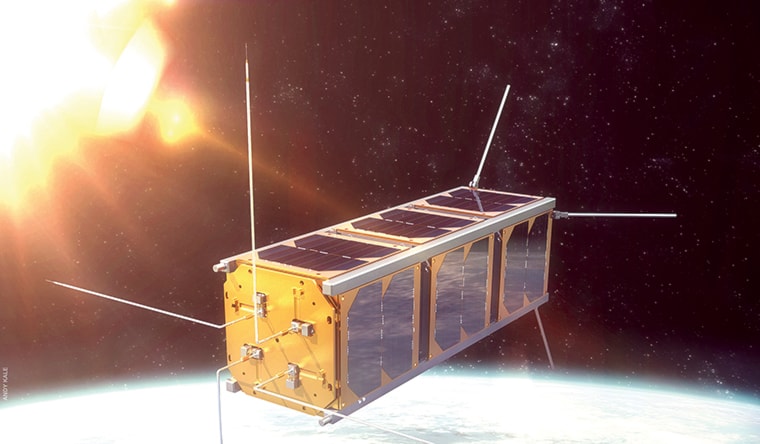A Lacombe high school graduate is on a team that needs $45,000 more to launch Alberta’s first satellite into space.
Charles Nokes is a third-year engineering physics student at the University of Alberta. He graduated from Lacombe Composite High School in 2011, knowing he wanted to get into engineering, but never really believing he would be a part of this type of project so soon.
“I hoped I would be doing this,” said Nokes.
“I’ve always been interested by aerospace, but I had no idea.”
But now the 20-year-old is working on both the design aspect of a satellite and will have a hand in studying the data it collects.
The satellite, EX-Alta 1, will enter a low Earth orbit and study space weather.
To put it into space, they are hoping a crowd-funding campaign will bring donations from all over. Nokes said it costs $60,000 to launch the satellite and so far they have raised slightly more than $15,000.
Nokes is part of the Alberta Sat team, a student group that hopes to develop a space program starting with the first made-in-Alberta satellite.
The cube satellite has three units: each is 10 by 10 by 10 cm. On the exterior, solar panels will generate power. Inside is a computer and the mechanics to control the satellite, as well as two payloads aimed at studying Earth’s magnetic field.
“The sun quite frequently gives off big energetic bursts of high-energy particles,” said Nokes.
“When those come and hit Earth’s magnetic field, they can cause disruptions that can damage telecommunications infrastructure.”
Nokes pointed to an occurrence in 1859 called the Carrington Event in which a solar storm hit Earth and knocked out all telegraph lines, even electrocuting some telegraph operators. A smaller solar storm in March 1989 knocked the Hydro-Quebec electrical grid offline for nine hours.
“That sort of thing can still happen and with the infrastructure we have today, something like that would be catastrophic,” said Nokes.
The satellite will be in space for about three months.
For Nokes, the thrill of being part of the team behind the satellite is two-fold. As an engineering project he said it is a big challenge, which he enjoys. And once it is in space, he will have a hand in studying the data the satellite collects.
This summer, he will do some research with the head of the space physics research team at the University of Alberta, Ian Mann, related to what the satellite will measure when it is launched.
“It will be really cool when it does go up to have a chance to see how the data it (the satellite) collects compares to what we have collected so far with ground stations and satellites that are higher up in space,” said Nokes.
“I’m really invested in both aspects of the project.”
Anyone interested in donating to the project can visit www.ualberta.useed.net/projects/90/home. Donations start at $5 and increase with gifts for people who donate more money, including having the donor’s name engraved on a chip on the satellite for $100; getting a large colour poster of the satellite and two names engraved for $250 or, for $10,000, a potential donor can have a 3D model of the satellite.
mcrawford@www.reddeeradvocate.com
